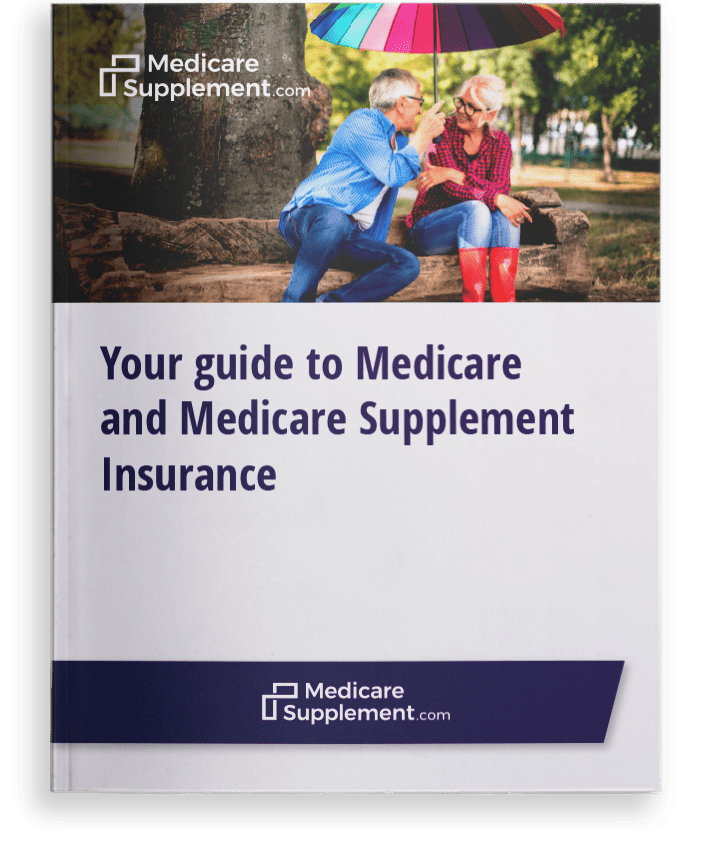Costs
Medicare Supplement Insurance Cost
Insurance companies price Medicare Supplement Insurance (Medigap) policies based on three main things: your plan choice, your personal factors, and their pricing systems. Because of these factors, the monthly cost of a Medicare Supplement insurance plan can vary widely.
One thing that will greatly affect the cost of your coverage is which plan you choose to buy. The 10 standardized plans vary greatly in their coverage and benefits, and so do their prices. Your personal factors, such as age and tobacco use, will also affect your prices.
Insurance companies will ask you several questions about your health history to help predict your future health care costs.
Finally, the price will be affected by the pricing system used by the insurer and how it treats age. Insurers have one of three pricing systems to use. The main difference between them is how they treat age, which will define how your premium will change in the future.

Your Medigap plan choices
The first factor that affects your premium is the insurance plan you choose. There are 10 standardized insurance plans offered in most states. Each standardized insurance plan has a different amount of coverage. They range from the low-benefit Plan A to the full-benefit Plan F.
In most cases, insurance plans with less coverage will cost less. Since Medigap plans are standardized, one insurer's Plan F will offer the same benefits as another insurer's Plan F. But despite the standardization, the cost for each insurance plan can vary greatly from one insurer to the next. A 2013 study by Indiana University found that for a 65-year-old female Indiana resident, Medigap premiums for Plan F could vary by about $2,500 a year.1 Comparison shopping is important and can help reduce the monthly premium cost.
Medicare Supplement Insurance Cost Factors
The second thing that impacts your monthly cost is your personal factors. Insurers use your personal factors in a process called “underwriting” to predict how much you'll cost them to insure. If you apply during the open enrollment period, however, insurers can't use underwriting, and your personal factors won't affect your final price. When insurers are allowed to use underwriting, they can look at, among other things:
- Tobacco use
- Gender
- Location
- Age
1. Tobacco use
Tobacco use can lead to serious health risks including cancer, heart disease, and strokes, which ultimately cost the insurance company more money. To balance this cost, insurance companies usually charge higher premiums for those who smoke.
2. Gender
Another piece of personal information required is your gender. Your gender can be factored into the premium cost, but this information weighs less today than it did in the past.
3. Location
The final personal factor is an applicant's ZIP code. A ZIP code is required on a Medigap policy application because health care costs vary greatly based on where you live. This is mostly because different areas have different average health care costs. However, location doesn't usually affect prices too much. The Indiana University study found that for 90% of Medigap policies, the insurer had up to only three different prices for the same plan throughout the state.
4. Age
When you apply for coverage, insurers will want to know your birthday. They ask because your age will probably affect how often you file claims. The average cost to insure a 65-year-old is significantly lower than the average cost for a 85-year-old, and that fact is reflected in your premiums. How much of an effect age really has on your policy will also be determined by your insurer's pricing system.
Your insurer's pricing system
The final factor that will affect your Medigap premiums is the pricing system your insurer uses. These define if and how premiums will increase in future years. Medigap insurers can quote policies based on one of the following pricing structures:
- Attained-age pricing
- Community-rated pricing
- Issue-age pricing
Attained-age pricing bases the premium on your current age. The premium continues to increase as you age. This is the most common pricing structure for Medigap insurance companies.
Community-rated pricing doesn't let your age affect your price. For this pricing structure, a 65-year-old applicant would be quoted the same rate as a 75-year-old. Younger and healthier enrollees would likely face higher premiums to balance out the cost of insuring unhealthy and older enrollees. Premiums do not increase based on age, but can increase based on inflation.
Issue-age pricing bases your price on how old you are when you first buy the policy. The premium rate is fixed and does not change as you age. For these policies, the initial premium cost might be more expensive than an attained-age policy, but it might cost less in the long term. This pricing method is less commonly used by insurers.
Speak with a licensed agent to learn more.
1 https://kelley.iu.edu/hzlin/medigap.pdf

Get a Free Medicare Guide!
Enter your email address and get a free guide to Medicare and Medicare Supplement Insurance, as well as important Medicare news and tips. We promise to never send you spam – just helpful content!
By clicking "Get your guide" you are agreeing to receive emails from MedicareSupplement.com.

